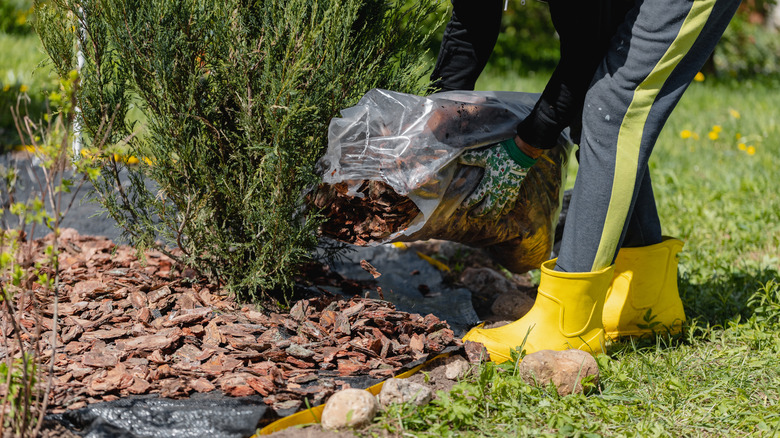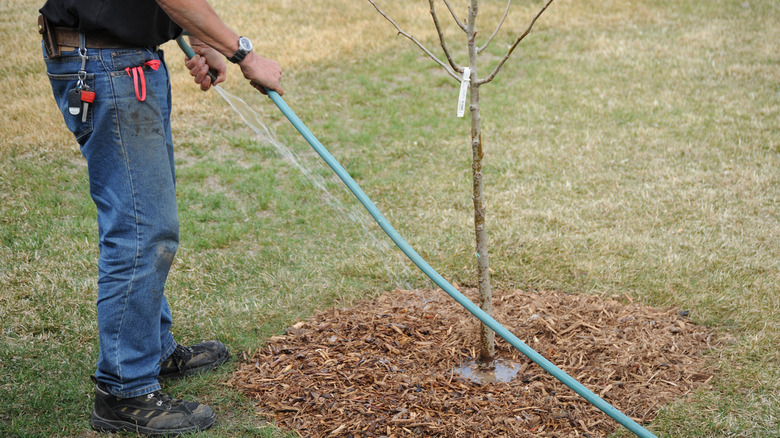Why Skipping This Step After Mulching Could Ruin All Your Hard Work
The smell of freshly laid mulch can seem strong enough to repel even the most seasoned gardener, but the benefits of this gardening essential simply can't be denied. Not only does it act as a front line of defense from weeds, harsh weather, and strong winds, but it also provides much-needed nutrients for your flowers, shrubs, and trees. To many, mulch application may seem like a "set it and forget it" process, but the truth is that the magic doesn't actually happen until you water it.
In fact, this is a common mulching mistake that can mean the difference between mulch that stays in place and provides benefits to your greenery, or mulch that either blows away or becomes dehydrated — and essentially, ineffective. There are several types of mulch to choose from, such as pine needles, bark, and rubber-based, but the process for its application is relatively the same across the board: clear out the weeds, apply the mulch, and give the ground a quick spray with some water.
Why watering your mulch is important
As the unsung hero of every garden, mulch will deliver on its promises every time as long as it's properly applied and well-maintained. This step is so crucial in its application process because mulch can blow away with a strong wind, leaving you not only with a littered yard or sidewalk, but with exposed soil. Giving the mulch a good hosing down helps to secure it in place on top of the soil, in addition to driving smaller pieces down further into it, which promotes weed control.
However, remember that too much of anything can turn into a bad thing — overwatering the mulch is very much possible. When going over the mulch with your hose or watering can, be sure to spread water evenly across the area, just as you would with the soil. Doing so helps to ensure even saturation, and it can prevent certain areas from being waterlogged. Keep in mind that you don't want to drown the mulch in water, the goal is to only dampen it.
Purchasing a rain gauge can be helpful if you're uncertain about how much water to add to your mulch — it also helps you keep a close eye on the soil's hydration over time. Additional aftercare includes combing over the mulch with a rake a couple of times a year to prevent compaction. And don't forget to replace and add new mulch to your garden beds every three to five years, as its nutrients and quality will lessen over time. Remember, keeping up with the health of your soil is the easiest way to ensure the health of your plants.

